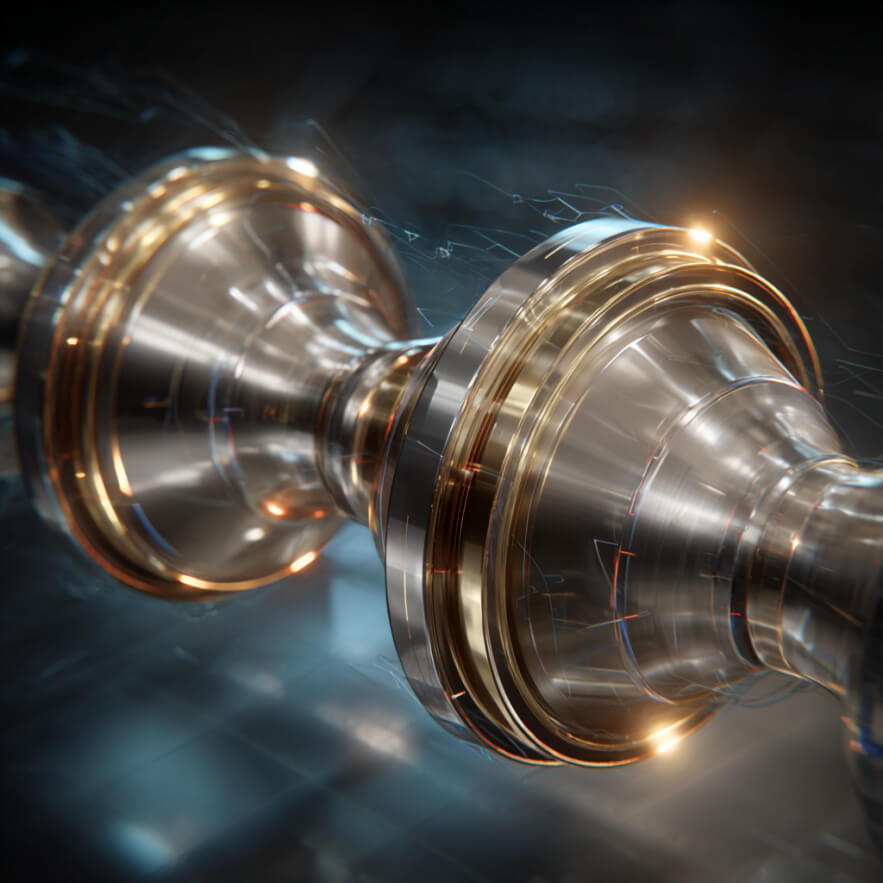Engineers have long sought materials that could “think” — not by resisting stress through bulk, but by responding to it intelligently. Smart alloys, or shape memory alloys (SMAs), answer this need. These materials can change their geometry under temperature shifts and return to a preset shape. This makes them a powerful solution for building joints that are not just strong, but durable, self-adjusting, and maintenance-free.
How shape memory alloys work
The key to smart alloys lies in the phase transition between martensite and austenite structures. At certain temperatures, the atomic lattice shifts from one form to another, changing the material’s shape. When returned to its original temperature, the material “remembers” its former shape and returns to it. This cycle can be repeated many times with high precision and minimal strength loss in early cycles.
The most widely used example is nickel-titanium, also known as Nitinol. It’s corrosion-resistant, biocompatible, and capable of hundreds of deformation cycles without damage. While Nitinol is best known for its medical applications, its use in mechanical and structural engineering is expanding. Engineers can now customize the activation temperature ranges, tailoring alloys to suit specific operating conditions.
A striking benefit appears in fittings and couplings: the alloy can be cooled and installed with ease, then heated to grip its mating surface tightly. This provides a weld-free, bolt-free, adhesive-free joint. It’s especially useful where post-installation access is limited or impossible — such as in deep-sea systems or sealed aerospace compartments.
Advantages of smart alloys in structural connections
Smart alloys eliminate the need for complex mechanical operations like welding, riveting, or threaded connections. This simplifies assembly, reduces labor, and boosts reliability. Joints formed using shape memory effect don’t loosen under vibration, don’t need torque settings, and hold firm through thermal activation alone.
One standout feature is the self-tightening behavior of these alloys. Once activated, the material contracts to create uniform clamping force without introducing stress concentrations. That’s critical in aerospace, nuclear systems, and high-performance turbines — where even micro-cracks can be disastrous. These connections tighten themselves over time as temperature cycles continue.
Another major benefit is zero maintenance. Once formed, such joints don’t need inspection or re-tightening. In spacecraft, where human intervention is logistically expensive, Nitinol-based latches have replaced traditional mechanisms. In industry, smart alloys act as passive safety locks that respond to temperature — for instance, closing a valve in a fire without electronics or user input.
Types of joints enabled by shape memory alloys
Smart alloys are used in various types of joints: sleeve-based, crimped, snap-lock, and temporary deformation joints. The choice depends on geometry, loads, environmental conditions, and serviceability. For example, sleeve-type joints are common in pipeline systems: the sleeve is applied cold and then heated to clamp tightly and create a leak-free, high-pressure seal.
Crimp joints using Nitinol wire are popular in electronics and precision assemblies. These eliminate the need for soldering or screws, which is ideal for miniature or non-repairable components. The wire is stretched at room temperature, and once current flows through, it remembers and holds the tightened position.
Temporary joints are fascinating because they let you lock a component in place and then release it once a specific temperature is reached. These are found in deployable antennas, sensor mounts, or emergency release mechanisms. Their strength lies in simplicity — no motors, gears, or actuators are needed. It’s all done by the material itself.
Design considerations for shape memory joints
Designing with smart alloys requires deep understanding of activation temperatures, heat transfer, and mechanical loads. Heating alone isn’t enough — temperature must be distributed evenly, or the joint might deform unevenly. Engineers must account for both thermodynamics and contact surface geometry to ensure proper engagement.
Environmental thermal stability is a big factor. If a system operates under wide temperature swings, the joint might activate unintentionally or fail to respond. That’s why different alloy compositions are used — adding elements like copper, iron, or chromium to shift phase transition points.
A useful tip from engineering teams: design for repeatable activation. Leave some clearance or elastic room in the system so the joint can respond again to thermal cycles if needed. This extends service life and makes force tuning possible without disassembly. Some companies even use infrared diagnostics to check the condition of an alloy in-situ — without removing or cutting the part.
Real-world applications across industries
Smart alloys are already used across medicine, construction, mechanical engineering, and energy. In bridges, expansion joints made from SMAs automatically adjust to seasonal length changes, protecting supports from stress. In shipbuilding, underwater couplings made from memory alloys provide strong, weld-free joints even in difficult-to-access locations.
In healthcare, shape memory materials are a standard — from vascular stents and bone fixators to orthodontic devices. These products activate within precise temperature ranges to minimize trauma and ensure smooth deployment inside the body. In prosthetics, SMAs reduce weight and improve comfort by adapting to body temperature.
In heavy industry, Nitinol works as a thermal fuse. In gas systems, for example, a Nitinol pin can trigger instant valve closure during fire, operating faster than sensors and without power. This enhances safety and eliminates dependence on external electronics — ideal for isolated or hazardous environments.
If you’re interested in materials that redefine structural design, check out “Metamaterials and their use in next-generation structures”. It shows how geometry can matter more than composition.
What to know about smart alloys in engineering joints
- Smart alloys create durable, weld-free and bolt-free joints
- Shape memory connections require no maintenance and work autonomously
- Alloys can be tuned for specific activation temperatures and field conditions
- Applications span medicine, aerospace, construction, and energy systems
- Enable accessible assembly even in hard-to-reach places
Yes — these joints remain tight and may even strengthen over time with thermal cycling.
No, they are designed to function autonomously without adjustment or inspection.
It requires thermal modeling, but with the right tools, it’s a manageable and efficient process.

